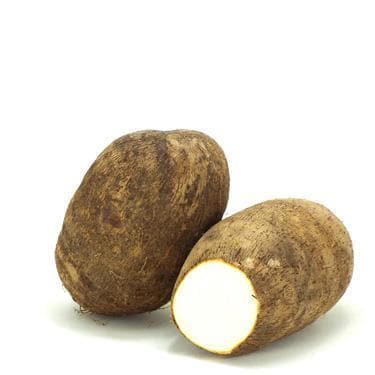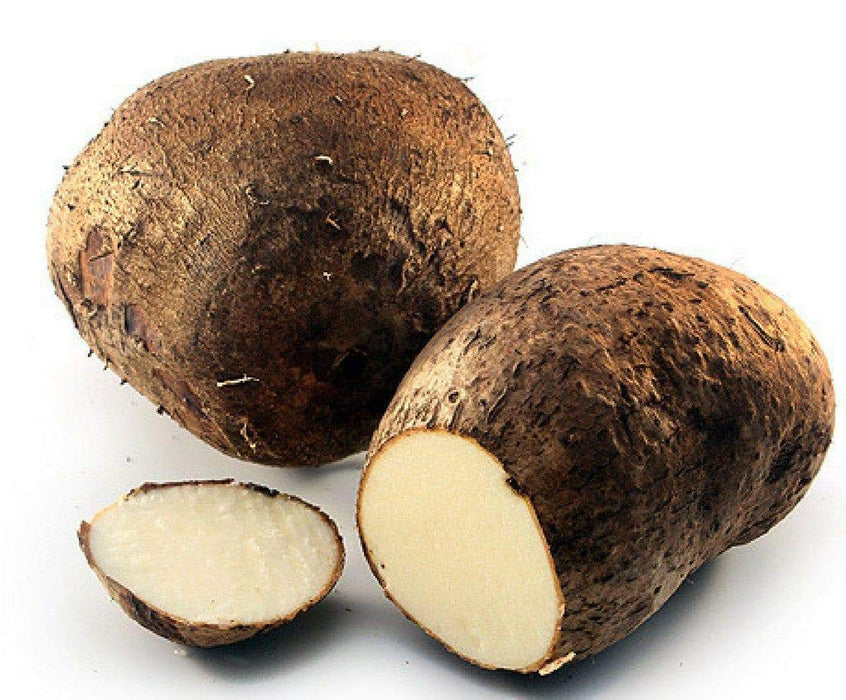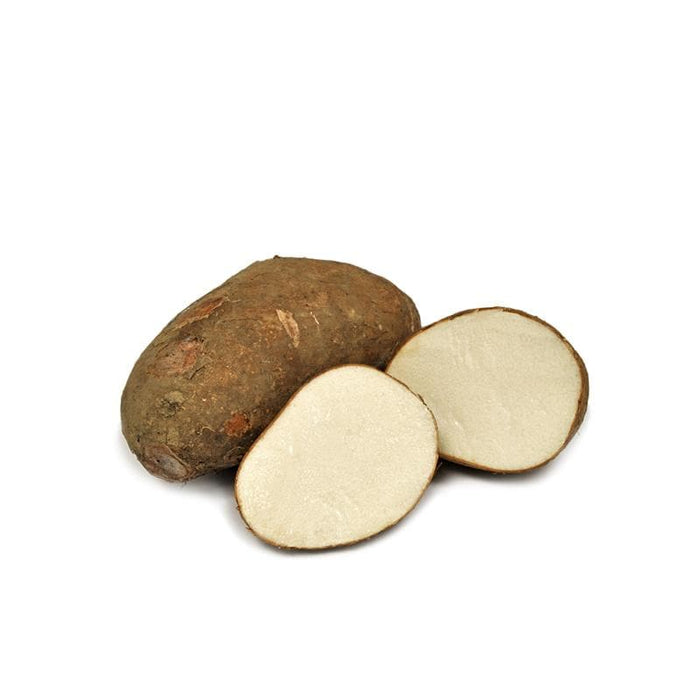
Costa Rican White Yam or Name root, CARIBBEAN ROOT VEGETABLE
Most orders are processed by the next day
Select your desired size and/or color from the available options.
Name, has slowly become one of the most important food crops in the world!
Grown throughout the tropics as well as West Africa, China, Korea, the South Pacific, India and the Caribbean, Name is often saved for special occasions and is considered a festival food in Cuba.
Shaped like a long sweet potato, the flesh of Name is creamy in color while its skin can be light brown, dark brown, or tan. Its flavor is somewhat nutty with a slightly chewy texture similar to a potato. Extremely versatile, Name can be baked, boiled, steamed, scalloped, fried or creamed.
The skin of the Name should be scrubbed with a brush under running water prior to use. To easily peel, cut into cubes. With a knife cut out flesh and remove all skin. Place in a bowl of water and lemon juice until ready for use.
Cultivation conditions
A warm tropical climate is required, but while D. cayenensis needs a long rainy season (about 10 months), D. rotundata cultivars can be grown with only 6-7 months of rainfall (100-150 cm evenly distributed) and thus can be grown further away from the equator where dry seasons are longer; also, because of its greater tolerance of drought, this type is adapted to the Caribbean region, though D. cayenensis is also grown there. D. cayenensis is relatively tolerant of sandy soils: D. rotundata thrives best on heavy soils even with a high clay content. Responses to organic matter (FYM or heavy mulch) are good. Nitrogen appears to be especially important (in Ghana 67 kg nitrogen applied after tuber reserves were exhausted gave a 22 per cent increase in yield; phosphorus gave a small response but potassium none), but fertiliser requirements vary from place to place.
Planting procedure
Material-usually small whole tubers, crowns or mid-section cuttings of large tubers (in 100-150 g pieces), dried for a few days before planting and preferably treated with wood ash to protect the pieces from fungal infection. Propagation of D. rotundata by stem cuttings is possible but does not yet appear to be commercially developed. Planting material must be disease-free.
Method-in Africa, yams are normally planted in land freshly-prepared by 'slash and burn', in mounds which are usually large enough for one plant, but sometimes for several. The pieces are planted at a depth of 5-15 cm, sometimes with the stem end down. The mound may be mulched with dried grass. In the Caribbean, planting in ridges 30-50 cm high is the usual practice, the seed tubers being placed 10-15 cm deep, by hand or by machine. In some areas, where soil drainage is naturally good, planting on the flat is practiced. Staking appears to be essential.
Field spacing-mounds are 1-2 m apart, and ridges also 1-2 m apart. Maximum yields are obtained by spacings of I x I m (10 000 ha).
LET OUR CUSTOMER SPEAK FOR US

![[Seeds] - Caribbeangardenseed](http://caribbeangardenseed.com/cdn/shop/files/gift-card-gift-card-1_1024x1024_dfa857db-9150-4315-a362-7f0bb3fb9c47_60x28.png?v=1703978838)

